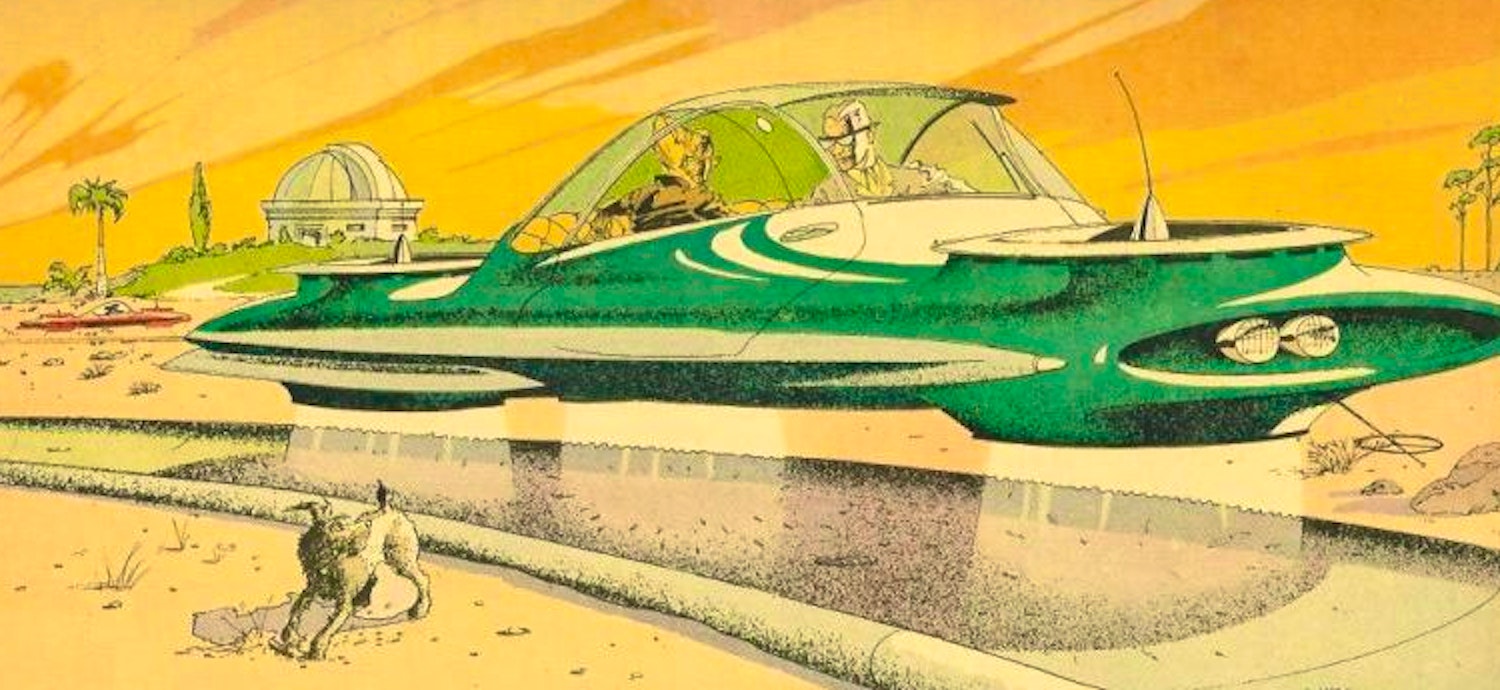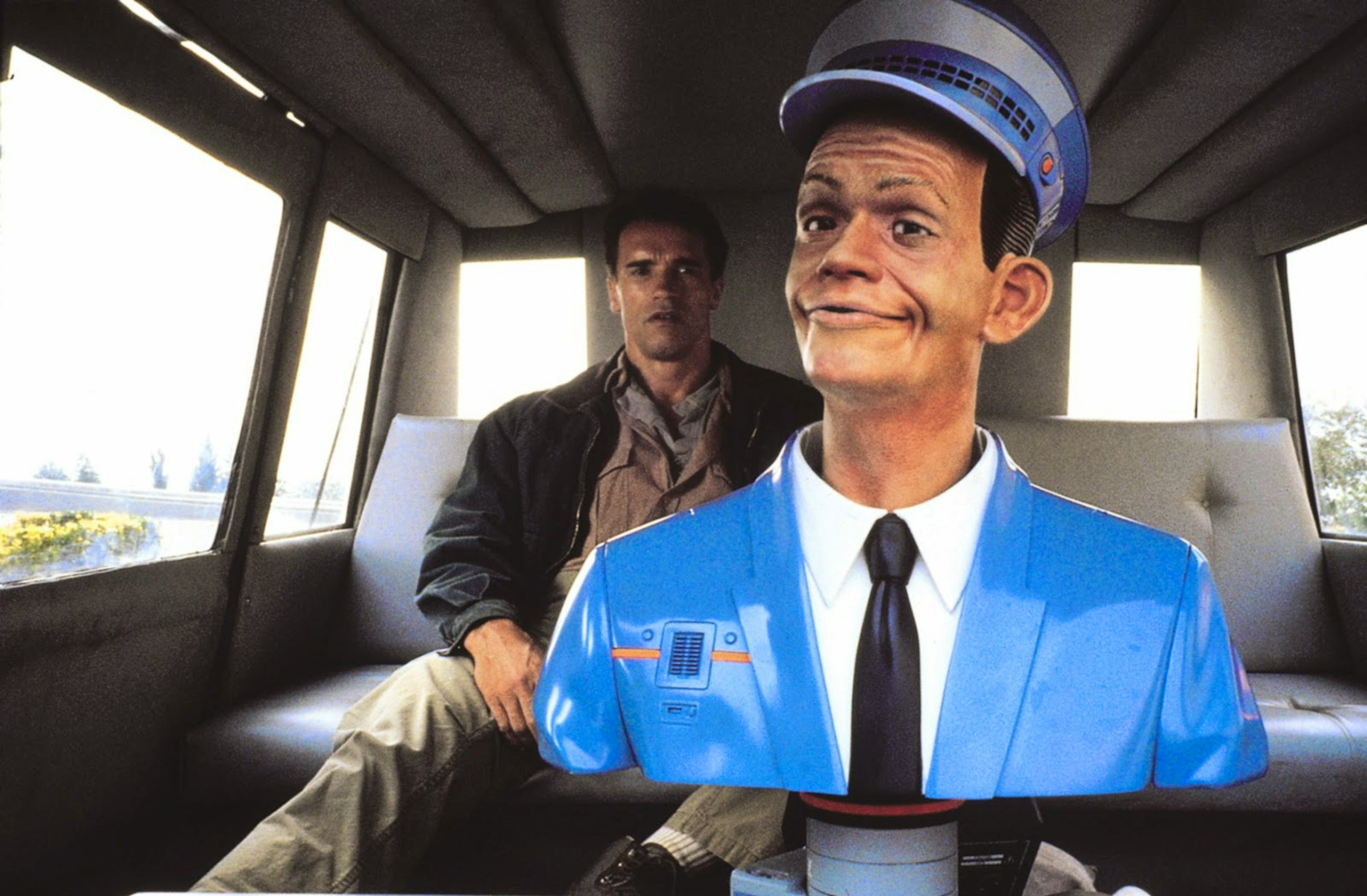Chris Urmson, the mild-mannered robotics expert who ran Google's self-driving car project, used to say that when his son reached driving age in 2019 the technology would be available so the teenager wouldn't have to take a driving test.
QuickTake Driverless Cars
In August, less than a year after auto industry veteran John Krafcik took the helm of the project, Urmson left with much work remaining: Google has yet to launch an autonomous vehicle service for the public.
Chris Urmson
Photographer: Drew Angerer/Bloomberg
Other top technologists have also departed and progress has been slow. Once considered a leader in the field, Google has lost its first-mover advantage to other companies pursuing more practical, less-ambitious self-driving car services, said former members of the project and other people familiar with the situation. They asked not to be identified because details of the effort are private.
"They need a partner, a sales force, a strategy," said Roger Lanctot, associate director of Strategy Analytics' Global Automotive Practice.
Google's project started in 2009, long before carmakers and most other companies seriously considered the technology. But when Singapore unveiled the first autonomous taxi service in August, Google wasn't involved. Instead, a small startup called nuTonomy provided the technology. Uber Technologies Inc., founded in 2009, will soon let users of its popular ride-sharing app hail autonomous Volvo SUVs in Pittsburgh.
Google has driven more than 1.8 million miles in tests on public roads in a bid to perfect its software to handle difficult situations, such as driving in snow. Tesla Motors Inc. already offers partially autonomous features in more than 70,000 of its electric cars, and Otto, a startup run by former Google car project members, is developing a self-driving system for trucks on highways, an easier technological challenge than the one Google faces. Uber acquired Otto in July.
"Google still has an imperfect system and no clear path to go to market," said Ajay Juneja, chief executive officer of Speak With Me Inc., which offers voice recognition and related technology for cars, watches and other connected devices. "How exactly would they have shipped something by now?"
Broader Challenge
This is part of a broader challenge Google parent Alphabet Inc. faces turning research projects into profitable businesses. The company is more cautious about rolling out new technology early, after its Glass internet-connected eyewear flopped, according to one of the people. There's also a higher bar now for projects as Chief Financial Officer Ruth Porat has said she requires clearer paths to profitability before approving more funding or expansion.
Possibly the biggest drag on the program is the sheer scope of Google's ambitions. Its aim is to revolutionize transportation through full autonomy. The software must be trained thoroughly to handle all eventualities. Meanwhile, there are already methods to make self-driving cars good, rather than perfect. That has helped companies including Uber, Daimler AG's Mercedes-Benz, Tesla and Volvo Car Group catch up with Google, Juneja said.
For more on autonomous cars: Bloomberg's QuickTake
Uber's service, which is tied to the smartphones of drivers and passengers, can generate a lot more driving data, an essential ingredient to quickly train the artificial intelligence software needed to guide self-driving vehicles, Morgan Stanley analysts said in a recent research note.
"Uber logs as many miles in 24 minutes as Google's autonomous cars have logged in their existence," they wrote. "While none of these miles are fully autonomous today, we just point out the scale of experience that can accelerate the development of the AI, mapping and learning for autonomous cars."
Tesla, with thousands of internet-connected cars on the road, has a similar data advantage, one former member of the Google car project said.
Partners Needed
The two main ways for Google to commercialize the technology are by including Chauffeur, the name for its self-driving software, in cars made in high volume by existing auto manufacturers, or through a popular ride-sharing service that could slowly replace a human-driven fleet with automated vehicles, industry experts said.
Google has neither of these yet. It struck a deal in May with Fiat Chrysler, but only to put its software in 100 minivans. Talks with other car companies, such as Ford Motor Co., have yet to produce high-volume deals. And many car companies are pursuing their own self-driving strategies. General Motors Co. bought self-driving software startup Cruise Automation in March and invested $500 million in ride-sharing service Lyft Inc., gaining two important ingredients for an autonomous vehicle service.
A Google unit invested in Uber in 2013, sparking speculation Google's self-driving software would automate Uber rides. But Uber is building its own autonomous technology now. Google is planning to expand a ride-sharing service built around its Waze navigation app, however that will only be in San Francisco later this year, while Uber and Lyft cover most major U.S. cities.
"I think they'd rather enable than do," Lanctot, of Strategy Analytics, said. "As enabler, they can work with all, rather than become a competitive target."
Frustration
Slow progress caused frustration among some members of the Google car project, and that's been exacerbated by early momentum of rivals that entered the race later, according to former members of the team and a person familiar with the situation.
The team knew what it would take to deliver a fully-autonomous system, known in the industry as L4, but some Google executives didn't understand the complexity, according to one former member of the project. The person left to help run an active business with paying customers, something that's missing from the car project. A Google spokesman declined to comment for this story.
Several years ago, some on the team wanted to push ahead with a service that didn't require full automation, but Google co-founder Larry Page insisted on complete human driver replacement, another person said.
'Seven-Year Itch'
Sebastian Thrun, the first head of the Google car project, left in 2014 to focus on his online education startup Udacity Inc. and develop flying cars with Page.
In early 2016, Anthony Levandowski, one of the original engineers on the project, co-founded Otto. He started the company with Don Burnette, who wrote software for Google's self-driving car, Google robotics expert Claire Delaunay and Lior Ron, who worked on Google Maps and Android smartphones.
Otto's goal is to "speed the adoption of self-driving technology," according to its website. Levandowski told the Wall Street Journal in May that it's easier to prove Otto's technology is better than humans on highways, where the tasks of driving are fairly straightforward, than in cities, which generate more complex driving situations. Levandowski declined to comment on why he left Google's project.
When Urmson left in August, other project veterans Jiajun Zhu and Dave Ferguson also departed.
One former member said the project is suffering from a "seven-year itch" as staff look for new challenges. Googlers like to see technology they work on influence as many people as possible, so it's been difficult to see the steady drumbeat of rival autonomous vehicle announcements while Google's project slogs through testing, this person said.
The New York Times reported Urmson was unhappy with the direction of the project under new CEO Krafcik and that he quarreled with Page about it. Urmson told Bloomberg he wasn't frustrated with progress, but declined to say why he was unhappy. "I'm not willing to get into it," he wrote in a text message, adding that he's "extremely proud of both the team and of the work."
Zhu said he and Ferguson left to put together a startup in artificial intelligence and robotics. "I joined the project 7.5 years ago when we were just a handful of engineers and look at where the whole industry is today," he wrote in an e-mail. "It would have been much harder to leave if we weren't so confident in the strength of the team at Google."
Another person familiar with the car project said Google still has the most experience in the field, and its technology is still the most advanced, despite the company's reluctance to use that advantage for practical routes to commercializing the technology, such as Otto's truck automation.
'Right Route'
Still, rolling out partial autonomous technology can be risky. Tesla's driver-assistance features, known as Autopilot, have been in the spotlight since a fatal crash in May. The company released an update of the software Sunday with enhanced radar and a GPS database and said that might have saved the driver's life.
In 2012, Google let employees test a partially autonomous system for automated highway driving and discovered the attention of the human drivers quickly drifted, leaving them incapable of taking back control quickly and safely. That persuaded the company to pursue full autonomy, even if it took longer.
"Full autonomy, although much harder, is the right route," Krafcik said in a recent interview with Bloomberg Businessweek.
Google hasn't decided on a business model yet, Krafcik said in the July 7 interview. "Serious snow testing" is still to come, while it could be 20 to 25 years before most trips in cities will be provided by autonomous vehicles, he added.
That's a stark contrast to Urmson's oft-quoted prediction about his son's driving test. During a recent text message exchange, he declined to say whether he's sticking with that forecast.
"It's been a long time and it's time to see what else is out there," he said after news of his departure broke. One thing he did confirm: He has no plans to join Uber.
Before it's here, it's on the Bloomberg Terminal. LEARN MORE
Source:
Google Car Project Loses Leaders, and Advantage, as Rivals Gain






